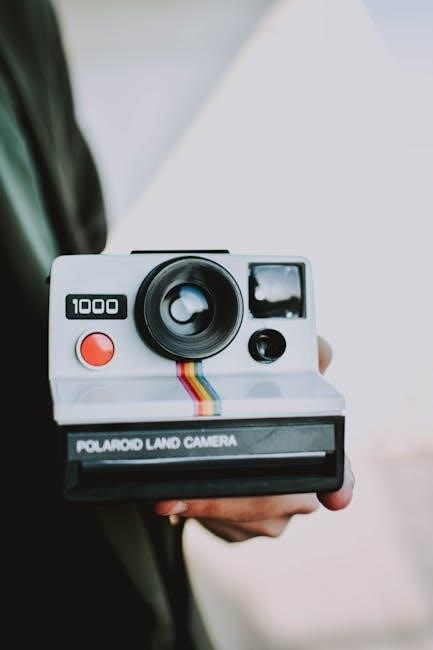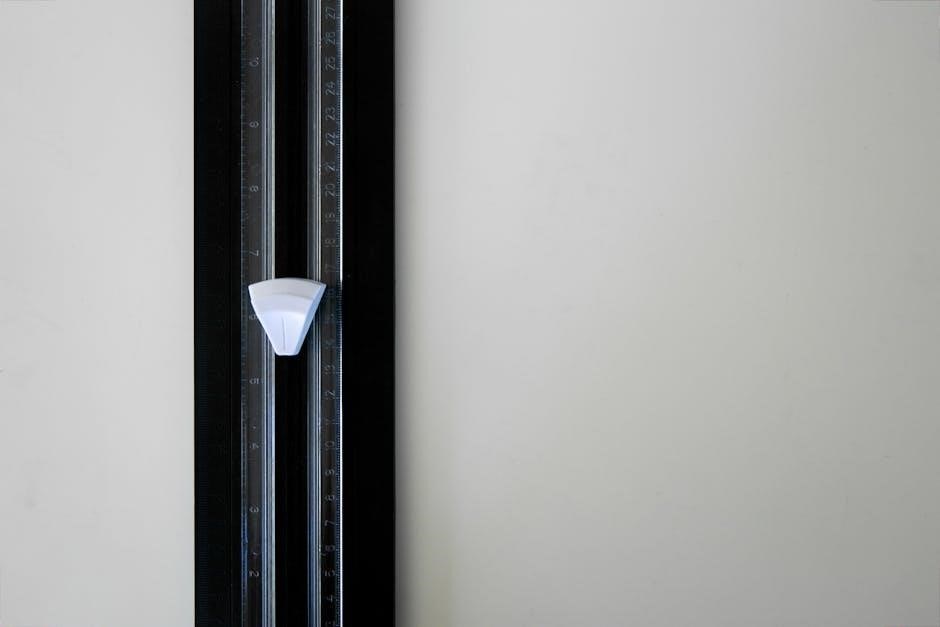
Manual propelling devices, such as oars, paddles, and rudders, are essential tools for controlling watercraft when engine power fails. They provide reliable backup propulsion, ensuring safety and maneuverability in emergencies. These devices are simple, durable, and versatile, making them vital for boating safety and efficiency in various water conditions.

Definition and Purpose of Manual Propelling Devices
A manual propelling device is a tool designed to manually operate and control watercraft, ensuring safe and efficient navigation. These devices, such as oars, paddles, rudders, and paddle wheels, enable boat movement without reliance on engines. Their primary purpose is to provide propulsion and directional control, especially in emergencies or calm waters. Manual propelling devices are essential for maintaining maneuverability and stability, allowing boaters to respond effectively to changing conditions. They serve as a reliable backup when engines fail, preventing drifting and potential accidents. Additionally, they promote environmentally friendly boating by reducing noise and pollution. Their presence fosters confidence among boaters, especially during emergencies or challenging conditions. Understanding and maintaining these devices is crucial for a safe and enjoyable boating experience, making them an indispensable component of watercraft operation. They are also legally required on certain pleasure crafts, emphasizing their critical role in boating safety and compliance with regulations.

Types of Manual Propelling Devices
Manual propelling devices include oars, paddles, rudders, and paddle wheels, each designed for specific purposes. Oars are commonly used in rowboats, consisting of a long shaft with a flat blade and handle, providing effective propulsion and steering. Paddles are versatile tools used in canoes, kayaks, and small watercraft, featuring single or double blades for efficient propulsion and directional control. Rudders are essential steering devices located at the stern, redirecting water flow to maneuver the boat. Paddle wheels are circular devices with rotating paddles, historically used in steamships and now found on paddle boats, creating thrust through manual or engine-powered rotation. These devices vary in design and functionality but share the common goal of enabling manual control and propulsion of watercraft, especially in emergencies or calm waters. Their simplicity and effectiveness make them indispensable for boaters seeking reliable alternatives to engine power.

Key Features of Manual Propelling Devices
Key features include durability, ergonomic design, adjustability, and versatility. These elements ensure optimal performance, comfort, and adaptability for various boating needs and conditions, enhancing safety and efficiency.

Durability and Material Quality

Durability and material quality are critical for manual propelling devices, ensuring they withstand harsh marine environments. High-quality materials like aluminum, carbon fiber, and durable wood resist corrosion and endure heavy use. Regular inspections are essential to identify wear and tear, preventing failures. A well-crafted device made from robust materials can endure rough waters and extreme conditions, providing consistent performance. Investing in superior materials ensures your propelling device remains functional and safe over time, reducing the need for frequent replacements. Always prioritize durability to maximize efficiency and safety during boating adventures.
Ease of Use and Ergonomic Design
Ease of use and ergonomic design are vital for manual propelling devices, ensuring comfort and efficiency during operation. Ergonomic handles and balanced construction reduce fatigue, allowing for prolonged use without strain. Lightweight materials, such as aluminum or carbon fiber, make maneuvering easier, especially for inexperienced users. Intuitive designs ensure smooth, responsive movement, which is critical for maintaining direction and speed, particularly in challenging conditions. Properly fitted grips and adjustable lengths cater to different hand sizes and preferences, enhancing control and precision. A well-designed manual propelling device prioritizes user comfort and ease of operation, making boating more enjoyable and accessible for everyone. By focusing on ergonomic principles, these devices minimize physical strain and maximize efficiency, ensuring a safe and enjoyable boating experience. Always choose devices that align with your physical needs and boating style for optimal performance.
Adjustability and Versatility
Adjustability and versatility are key features of manual propelling devices, allowing them to adapt to various boating needs and conditions. Many devices, such as oars and paddles, feature adjustable lengths or angles, enabling customization for different water conditions and user preferences. Rudders and paddle wheels may also offer tilt or rotational adjustments, enhancing maneuverability in tight spaces or changing currents. This adaptability ensures that manual propelling devices can be used effectively across a range of watercraft, from small dinghies to larger vessels. The ability to adjust these devices makes them indispensable for boaters seeking reliability and flexibility in diverse marine environments. Whether navigating calm waters or responding to emergencies, adjustable and versatile manual propelling devices provide the necessary control and efficiency, ensuring a safe and effective boating experience.

Importance of Manual Propelling Devices in Boating Safety
Manual propelling devices are crucial for ensuring safety and control in boating emergencies. They serve as a reliable backup when engines fail, preventing uncontrolled drifting and potential collisions. These devices enable precise maneuvering in tight spaces and calm waters, enhancing overall navigation and safety. By providing a manual means of propulsion, they help boaters maintain control and avoid accidents, especially in situations where engine power is lost. Additionally, manual propelling devices are often legally required for smaller pleasure crafts, underscoring their critical role in regulatory compliance and boating safety. Their presence fosters confidence among boaters, particularly during emergencies or challenging conditions. Regular inspection and maintenance of these devices are essential to ensure their reliability when needed most, making them an indispensable component of watercraft operation and a key factor in preventing incidents at sea.

Legal Requirements for Manual Propelling Devices

Manual propelling devices are subject to specific legal requirements to ensure boating safety and preparedness. According to regulations, pleasure craft up to 9 metres (29.5 feet) in length, including Personal Watercraft (PWCs), must carry either a manual propelling device or an anchor on board. This requirement applies to all such vessels, emphasizing the importance of having a reliable means of manual propulsion in case of engine failure. However, PWCs are exempt from carrying a manual propelling device if everyone on board is wearing a life jacket. These legal standards aim to enhance safety and ensure boaters can maintain control of their craft in emergencies. Compliance with these regulations is crucial for avoiding legal penalties and ensuring adherence to maritime safety protocols. Understanding and fulfilling these requirements is essential for responsible and lawful boating practices.

Regular Inspection and Maintenance of Manual Propelling Devices
Regular inspection and maintenance of manual propelling devices are crucial for ensuring their reliability and longevity. Boaters should inspect oars, paddles, and rudders for cracks, damage, or wear before each use. Connections and hinges must be secure to prevent failure during operation. Materials should be checked for signs of degradation, especially in harsh marine environments. Proper lubrication of moving parts, such as rudder hinges, can extend the lifespan of the device. After use, devices should be cleaned thoroughly to remove dirt, saltwater, or debris. Storage in a dry, protected environment is essential to prevent rust or mold. Using protective covers or bags can shield against scratches or damage. Regular maintenance helps identify issues early, preventing accidents and ensuring compliance with safety regulations. Neglecting inspections and maintenance can lead to equipment failure, compromising control and safety while boating. Proper care ensures manual propelling devices remain functional and ready for emergencies.